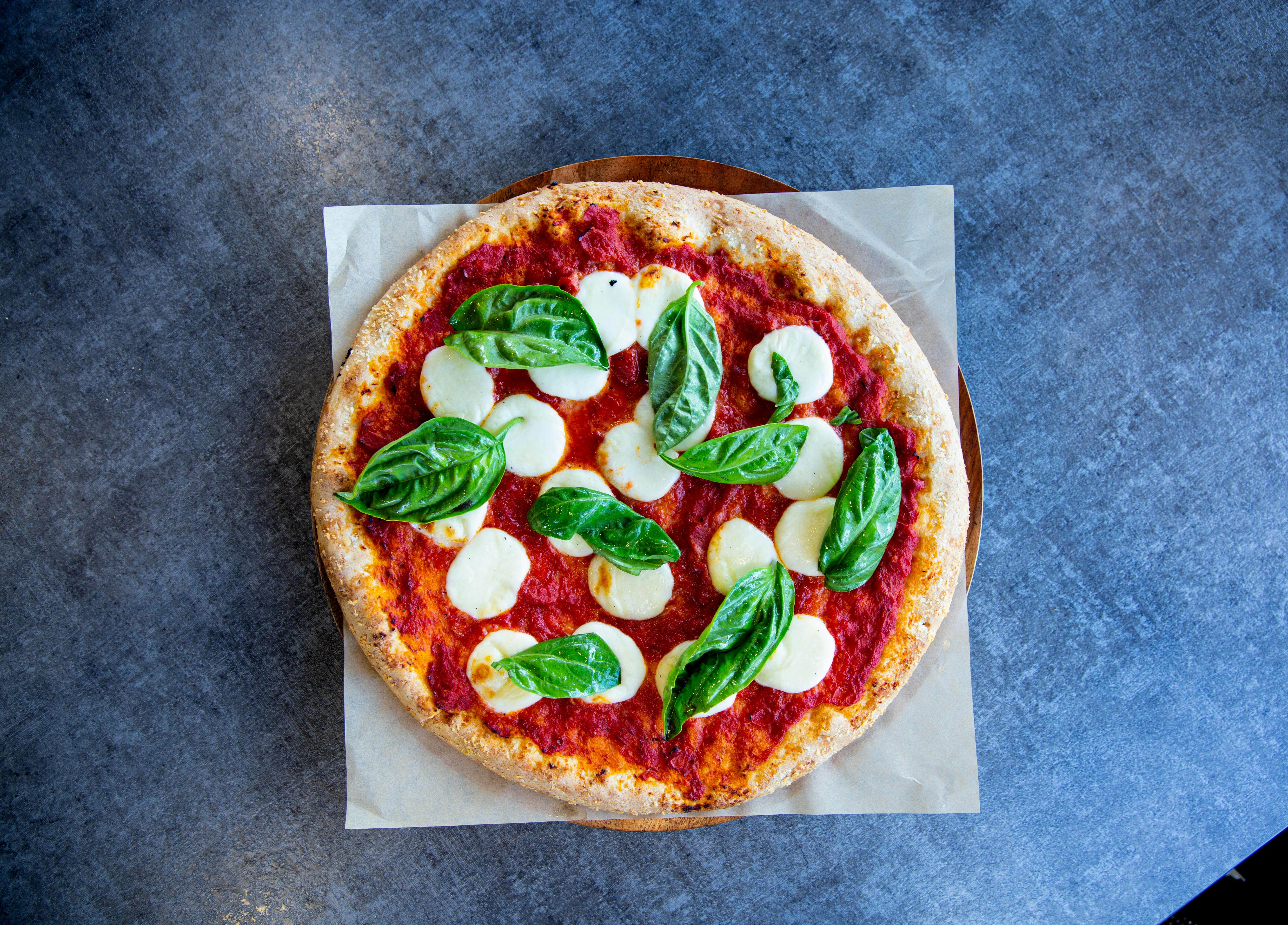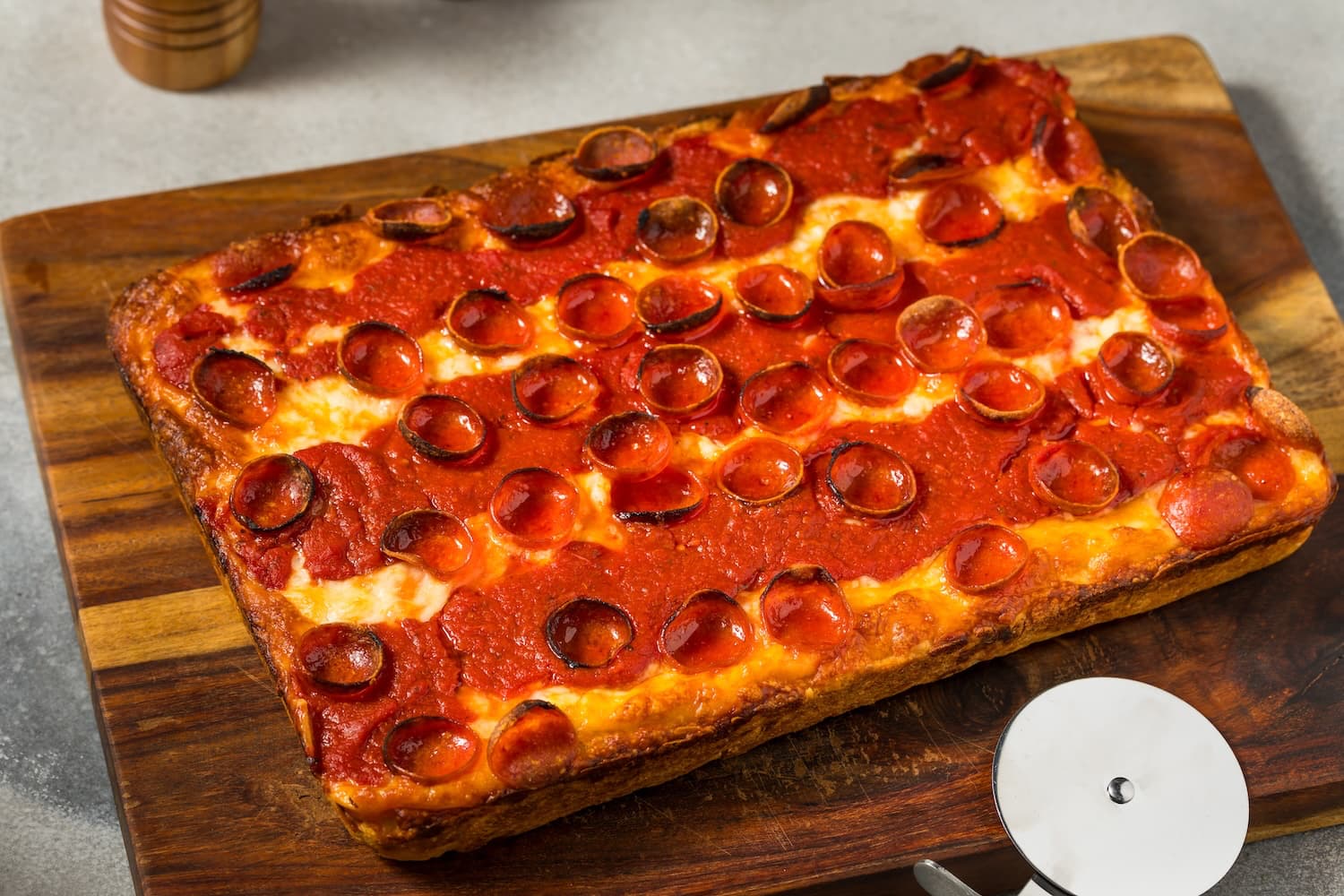Neapolitan Pizza: The Birth of a Culinary Icon
Neapolitan pizza (Pizza Napoletana) was born in Naples, Italy, during the late 18th and early 19th centuries. It started as humble street food sold to workers and the poor—cheap, nourishing, and quick to eat. What began as a practical meal evolved into a cultural treasure so important that in 2017 UNESCO inscribed the art of the Neapolitan pizzaiuolo (the craft of the Neapolitan pizza maker) as an Intangible Cultural Heritage of Humanity.
Unlike other pizzas that spread and adapted around the globe, Neapolitan pizza has remained fiercely protected and codified by associations like the AVPN (Associazione Verace Pizza Napoletana). Its identity is tied to the people of Naples, their ingredients, their wood-fired ovens, and the ritual of making and eating pizza together.
Key Characteristics of Authentic Neapolitan Pizza
- The Dough: made only with flour, water, salt, and yeast—no oil, sugar, or additives. The flour used is finely milled “00” with the right balance of strength and elasticity, so the dough stretches thin without tearing.
- Fermentation: a long, cool rise of at least 8-24 hours. This slow fermentation not only develops flavor but also makes the dough more digestible by breaking down starches and gluten.
- Texture: the centre of the pizza is very thin and soft, while the crust (cornicione) puffs up dramatically, forming an airy, chewy rim with irregular bubbles. The base should be flexible and foldable, not stiff or cracker-like.
- Toppings: less is more. The most traditional ingredients include San Marzano tomatoes (grown in volcanic soil near Mount Vesuvius), fresh mozzarella di bufala or fior di latte, fresh basil leaves, and a drizzle of extra virgin olive oil. Every ingredient is used sparingly, letting each shine without overwhelming the dough.
- Cooking Method: baked directly on the stone floor of a wood-fired oven, with the temperature reaching around 900°F (485°C). The intense heat cooks the pizza in just 60–90 seconds, producing the signature leopard-spotted char on the crust. The rapid bake locks in moisture, keeping the dough soft and tender.
Why It's Special
Neapolitan pizza is more than just food—it’s a cultural symbol and a craft passed down through generations. Its uniqueness comes from the combination of simplicity, technique, and ingredients:
- Balance of flavors: the dough, tomatoes, cheese, and basil are in harmony, never competing for attention.
- Digestibility: thanks to long fermentation and natural ingredients, Neapolitan pizza feels light, not heavy.
- Texture contrast: the soft, moist centre meets the airy, slightly chewy crust with charred spots, creating a dynamic bite.
- Connection to Naples: the use of local ingredients and centuries-old methods ties every pizza back to its birthplace.
- Craftsmanship: every pizzaiolo develops their own rhythm and style in dough handling, topping, and firing, meaning no two Neapolitan pizzas are exactly alike—even within the same pizzeria.
Traditional Variations
Despite its global fame, Neapolitan pizza remains rooted in just a few traditional styles:
- Marinara: the oldest recorded style, topped with crushed tomatoes, garlic, oregano, basil, and olive oil. It’s dairy-free, rustic, and lets the dough and tomato flavors shine.
- Margherita: created (according to legend) in 1889 by pizzaiolo Raffaele Esposito for Queen Margherita of Savoy. Its toppings—red tomatoes, white mozzarella, and green basil—symbolise the Italian flag. Whether or not the legend is entirely true, the Margherita has become the most iconic Neapolitan pizza worldwide.
- Margherita Extra: a richer version of the Margherita, made with buffalo mozzarella and the highest-quality ingredients. This style highlights the indulgence and refinement possible within strict tradition.
The Neapolitan Pizza Experience
Eating Neapolitan pizza is meant to be an immediate experience. It is served fresh from the oven, hot and aromatic, often eaten with a knife and fork because of its soft centre—or folded into quarters in the traditional “a libretto” style for street eating. The aroma of burning wood, the sight of the leopard-spotted crust, and the first bite of tender dough with sweet-sour tomato and creamy cheese create a sensory moment that explains why Neapolitan pizza has captured hearts worldwide.




